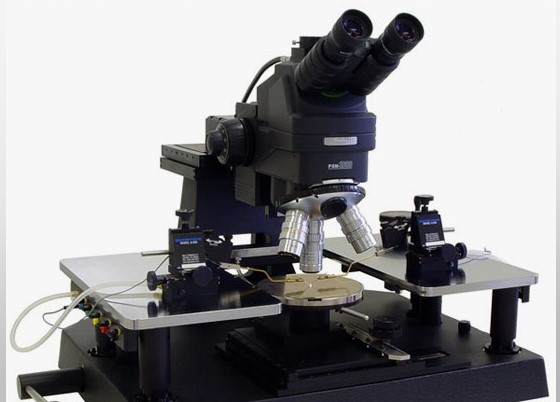The ever-evolving realm of technology, precision measurement tools play a crucial role in ensuring accuracy and reliability across various industries. One such cutting-edge instrument making waves is the co-axial blade probe. We'll embark on a journey to understand what a Co-Axial Blade Probe is and unravel the intricacies of its functionality.
What is a Co-Axial Blade Probe?
A co-axial blade probe, often referred to as a coaxial probe
or blade-style probe, is a specialized measuring device used in metrology and
quality control processes. It serves the purpose of obtaining accurate
dimensional measurements with high precision. Unlike traditional probes, the
co-axial blade probe features a unique design that sets it apart in terms of
performance and versatility.
Structural Components:
To comprehend the functioning of a co-axial blade probe,
it's crucial to understand its structural components. Typically, a co-axial
blade probe consists of the following key elements:
1. Blade Assembly:
At the heart of the co-axial blades and probe is the blade
assembly. This component is responsible for making contact with the surface
being measured. The blade is crafted with precision and is often made from
materials with excellent wear resistance to ensure longevity.
2. Co-Axial Configuration:
The term "co-axial" refers to the alignment of the
blade and the stylus within the probe. Unlike traditional probes, where the
stylus is offset from the blade, the co-axial design places both elements in
the same axis. This alignment enhances the probe's stability and allows for
more accurate measurements.
3. Internal Sensor Mechanism:
A co-axial blade probe incorporates an internal sensor
mechanism that detects the deflection of the blade upon contact with the
surface. This deflection is then translated into measurements, providing
precise data about the object's dimensions.
4. Mounting Interface:
To integrate seamlessly with coordinate measuring machines
(CMMs) or other measuring devices, co-axial blade probes are equipped with a
standardized mounting interface. This allows for easy attachment and
detachment, facilitating efficient use in various measurement setups.
How Does a Co-Axial Blade Probe Function?
Now that we have a grasp of its structure, let's delve into
the functioning of a co-axial blade probe.
·
Contact and Deflection
When a co-axial blade and probe come into contact with the
surface of the object being measured, the blade deflects. This deflection is a
result of the applied force and is a crucial aspect of the measurement process.
·
Sensor Response
As the blade deflects, the internal sensor mechanism within
the probe detects the amount of deflection. This sensor response is converted
into electrical signals, providing real-time feedback about the surface
conditions and dimensions.
·
Data Transmission
The electrical signals generated by the sensor are then
transmitted to the measuring instrument, typically a CMM or other compatible
device. These signals carry information about the deflection, allowing the
instrument to calculate precise measurements based on the probe's design and
specifications.
·
Data Analysis and Display
The final step involves the analysis of the transmitted data
and its presentation in a comprehensible format. This could include dimensional
data, surface profiles, or other relevant measurements. Modern co-axial blade
probes often interface with advanced software that enhances data analysis
capabilities and ensures accurate results.
Applications of Co-Axial Blade Probes:
The versatility and precision offered by co-axial blade
probes make them indispensable in various industries. Here are some notable
applications:
·
Aerospace Industry
In aerospace engineering, where precision is paramount,
co-axial blade probes find extensive use in measuring critical components such
as turbine blades and engine parts. The ability to capture intricate details
makes them a preferred choice in this demanding sector.
·
Automotive Manufacturing
The automotive industry relies on co-axial blade probes for
quality control in the production of components like gears, pistons, and other
intricate parts. The probes' high precision ensures that every manufactured
part meets stringent quality standards.
·
Medical Device Production
In the production of medical devices, where tolerances are
often in micrometers, co-axial blade probes contribute to the quality assurance
process. They are employed in measuring components for devices like pacemakers
and prosthetics.
·
General Metrology
Co-axial blade probes are widely used in general metrology
applications, providing accurate measurements for a range of objects and
materials. Their adaptability makes them a versatile tool in research and
development environments.
Advantages of Co-Axial Blade Probes:
Understanding the advantages of co-axial blade probes
further underscores their significance in precision measurement. Some key
advantages include:
·
High Precision
The co-axial design ensures that the probe's stylus and
blade remain precisely aligned, resulting in highly accurate measurements. This
level of precision is crucial in industries where small deviations can have
significant consequences.
·
Versatility
Co-axial blade probes are adaptable to various measurement
scenarios, making them suitable for a wide range of applications. Their
versatility enhances their value across different industries and measurement
environments.
·
Durability
Crafted from materials with excellent wear resistance, the
blades of co-axial probes exhibit durability over prolonged use. This
durability contributes to the longevity of the probe and ensures consistent
performance.
·
Ease of Integration
The standardized mounting interfaces of co-axial blade
probes facilitate seamless integration with different measuring instruments,
reducing setup time and enhancing overall efficiency.
Future Developments and Innovations:
As technology continues to advance, we can anticipate
further developments and innovations in the field of co-axial blade probes.
Researchers and engineers are likely to explore new materials, enhanced sensor
technologies, and improved data analysis techniques to push the boundaries of
precision measurement.
Conclusion:
The intricate world of metrology, Co-Axial Blade
Probes stand out as remarkable instruments, combining precision,
versatility, and durability. Their unique design and functionality make them
indispensable in industries where accurate measurements are paramount. As
technology continues to evolve, co-axial blade probes are set to play an even
more significant role in shaping the future of precision measurement.

